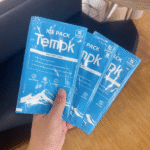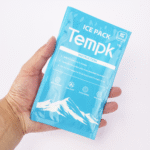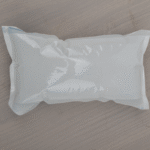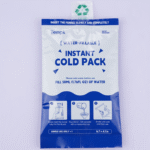Comment calculer la bonne quantité de glace carbonique pour une grande glacière?
Lors de la préparation de l'expédition ou du stockage d'articles sensibles à la température, savoir quelle quantité de neige carbonique utiliser dans une grande glacière est crucial pour maintenir la bonne température. Que vous transportiez des produits surgelés, médicaments, ou des articles périssables, la bonne quantité de neige carbonique garantit que vos produits restent froids sans trop dépenser en fournitures inutiles. Ce guide vous expliquera comment calculer la glace carbonique requise pour votre glacière, en fonction de sa taille, la qualité de l'isolation, et d'autres facteurs importants.
-
Comment calculer les besoins en glace carbonique pour différentes tailles de refroidisseurs?
-
Quels facteurs affectent l'efficacité de glace carbonique dans une glacière?
-
Comment maximiser la durée de vie de la glace carbonique?
-
Erreurs courantes lors de l'utilisation de glace carbonique et comment les éviter?
-
Combien de temps la neige carbonique durera-t-elle dans une glacière?
Comment calculer la quantité de glace carbonique nécessaire pour une grande glacière?
La quantité de neige carbonique requise pour une grande glacière dépend de plusieurs variables, comme une taille plus froide, la durée de votre voyage ou de votre expédition, le type de produits stockés, et facteurs environnementaux externes. Voici une règle de base:
Directives de base pour la quantité de glace carbonique
Pour une glacière typique de 50 à 75 litres, vous aurez généralement besoin entre 25 et 50 livres de neige carbonique pour maintenir un environnement froid pendant 24 heures. Le montant exact peut varier en fonction de divers facteurs tels que l'isolation., température extérieure, et à quelle fréquence la glacière est ouverte.
| Taille plus froide | Glace carbonique requise (Par 24 Heures) | Meilleur cas d'utilisation |
|---|---|---|
| 15-25 Quarts | 5-10 Livres | Délais d'expédition courts |
| 50-75 Quarts | 25-50 Livres | Refroidissement prolongé pour les envois volumineux |
| 100+ Quarts | 50+ Livres | Expéditions en vrac ou stockage à long terme |
Quels facteurs ont un impact sur la quantité de glace carbonique requise?
Plusieurs facteurs influencent la vitesse à laquelle la neige carbonique se sublime et, par conséquent, le montant dont vous avez besoin:
1. Durée du refroidissement
Plus la durée de votre voyage ou de votre expédition est longue, plus vous aurez besoin de glace carbonique. Une expédition sous 48 heures, par exemple, nécessite le double de la quantité de neige carbonique par rapport à un envoi en 24 heures.
2. Température ambiante
Les climats plus chauds provoquent une sublimation plus rapide de la neige carbonique. Si vous expédiez par temps chaud, vous devrez tenir compte du taux de sublimation plus élevé et augmenter votre approvisionnement en glace carbonique.
3. Qualité d'isolation du refroidisseur
La qualité de l’isolation de la glacière joue un rôle majeur dans sa capacité à retenir le froid. Une meilleure isolation réduit la quantité de neige carbonique nécessaire, alors que les glacières mal isolées nécessitent plus de temps pour maintenir la même température.
4. Type d'articles stockés ou expédiés
Différents articles ont des exigences de température différentes. Par exemple, les fournitures médicales ou les aliments surgelés peuvent nécessiter des températures plus basses, ce qui signifie que vous aurez besoin de plus de neige carbonique pour ces types d’envois.
| Facteur | Impact sur la glace carbonique | Meilleures pratiques |
|---|---|---|
| Durée | Des trajets plus longs = plus de neige carbonique | Prévoyez de la glace carbonique supplémentaire |
| Température ambiante | Température plus élevée = sublimation plus rapide | Utilisez plus de neige carbonique dans les climats plus chauds |
| Qualité de l'isolation | Meilleure isolation = moins de neige carbonique | Investissez dans des glacières de haute qualité |
| Sensibilité de l'article | Les articles plus sensibles nécessitent plus de glace carbonique | Assurer une protection suffisante contre le froid pour les denrées périssables |
Comment puis-je maximiser l'efficacité de la glace carbonique dans une grande glacière?
Maximiser l'efficacité de la glace carbonique aidera à garantir que votre glacière maintienne sa température froide pendant la période la plus longue possible..
1. Placement correct de la glace carbonique
Placez de la neige carbonique au fond de la glacière ou à proximité des articles les plus sensibles à la température. Cela permet à l'air froid de circuler vers le haut, maximiser l'effet de refroidissement.
2. Pré-refroidir le refroidisseur
Avant de charger la neige carbonique, pré-refroidissez la glacière en la plaçant dans un espace frais pendant plusieurs heures. Cela réduit la charge de température lorsque la neige carbonique est ajoutée pour la première fois., le faisant durer plus longtemps.
3. Minimiser l'ouverture du refroidisseur
Chaque fois que vous ouvrez la glacière, L'air chaud entre, ce qui réduit l'effet rafraîchissant de la neige carbonique. Gardez la glacière fermée autant que possible pour préserver le froid.
Quelles sont les erreurs courantes que font les gens lorsqu’ils utilisent de la glace sèche?
Utiliser correctement la glace carbonique nécessite quelques connaissances. Voici les erreurs courantes et comment les éviter:
1. Ne pas utiliser suffisamment de glace carbonique
Sous-estimer la quantité de neige carbonique nécessaire peut conduire à un refroidissement insuffisant, surtout pour les longs trajets. Calculez toujours la quantité supplémentaire de neige carbonique pour tenir compte de tout retard inattendu ou de toute fluctuation de température..
2. Utiliser une mauvaise isolation
Une glacière mal isolée entraîne une sublimation plus rapide de la neige carbonique, le faisant se sublimer trop rapidement. Investir dans de haute qualité, des refroidisseurs bien isolés pour maximiser l'efficacité de la glace carbonique.
3. Stockage inapproprié de la glace carbonique
La glace carbonique ne doit jamais être conservée dans un contenant hermétique, car cela peut provoquer une accumulation de pression et conduire à des situations dangereuses. Conservez toujours la glace carbonique dans un endroit bien ventilé.
Combien de temps durera la glace sèche dans une grande glacière?
La durée de conservation de la glace carbonique dans une glacière dépend de la taille de la glacière., La quantité de glace sèche utilisée, et conditions de température extérieures. En moyenne, la glace carbonique peut durer:
-
24 heures dans une petite glacière (15-25 litres) avec une isolation adéquate
-
48 heures dans une glacière moyenne à grande (50-75 litres)
-
Jusqu'à 72 heures dans une grande glacière (100+ litres) avec une excellente isolation
Pour garantir une plus longue longévité de la glace carbonique, utilisez des glacières bien isolées et envisagez d’ajouter de la neige carbonique supplémentaire pour les expéditions prolongées.
2025 Tendances de la logistique de la chaîne du froid
Dans 2025, le secteur de la logistique de la chaîne du froid connaît des progrès significatifs, notamment dans les emballages intelligents et les réfrigérants écologiques. Ces innovations remodèlent la façon dont nous utilisons la neige carbonique pour les expéditions sensibles à la température..
Développements clés:
-
Emballage intelligent: Un emballage avancé qui surveille la température pendant l'expédition permet de garantir que la bonne quantité de neige carbonique est utilisée.
-
Réfrigérants écologiques: Des réfrigérants durables sont en cours de développement pour réduire l'impact environnemental de la logistique de la chaîne du froid.
Questions fréquemment posées
Q1: De quelle quantité de neige carbonique ai-je besoin pour une glacière de 50 litres?
Pour une glacière de 50 litres, vous aurez besoin d'environ 25-50 livres de neige carbonique pour une période de 24 heures. Si la durée d'expédition est plus longue, augmenter le montant en conséquence.
Q2: Puis-je stocker de la glace carbonique dans une glacière ordinaire?
Non, la glace carbonique ne doit jamais être conservée dans une glacière hermétique. Assurez-vous toujours que le refroidisseur est bien ventilé pour éviter une accumulation dangereuse de pression..
Résumé et recommandations
En conclusion, déterminer la bonne quantité de neige carbonique pour une grande glacière dépend de plusieurs facteurs tels que la taille de la glacière, durée de l'expédition, qualité de l'isolation, et température ambiante. En suivant les meilleures pratiques pour le placement de glace carbonique, isolation, et stockage, vous pouvez maximiser la durée de vie de la neige carbonique et garantir que vos produits restent froids tout au long du voyage.
Étapes suivantes:
-
Calculez la glace carbonique requise en fonction de la taille de votre glacière et de la durée de l'expédition..
-
Investissez dans des glacières isolées de haute qualité pour une efficacité maximale.
-
Conservez toujours la glace carbonique dans un endroit bien ventilé pour éviter tout danger..
À propos du tempk
Tempk est spécialisé dans la fourniture de solutions de chaîne du froid, proposant de la neige carbonique et des matériaux de contrôle de la température conçus pour préserver l'intégrité des expéditions sensibles à la température. Nous fournissons de manière rentable, fiable, et des solutions écologiques adaptées aux entreprises de divers secteurs.
Contactez-nous aujourd'hui pour des conseils d’experts et pour en savoir plus sur nos services de chaîne du froid!























